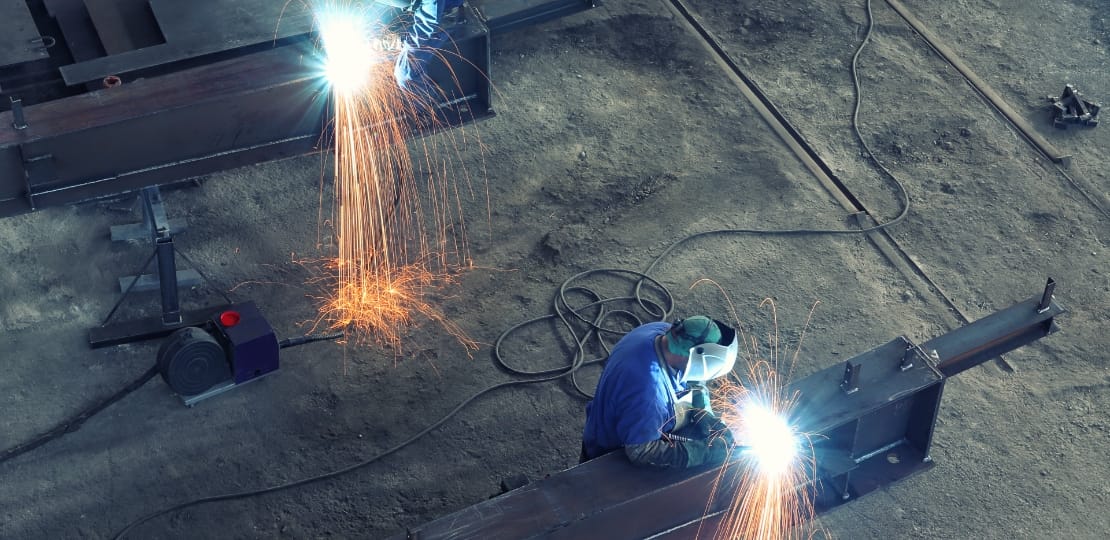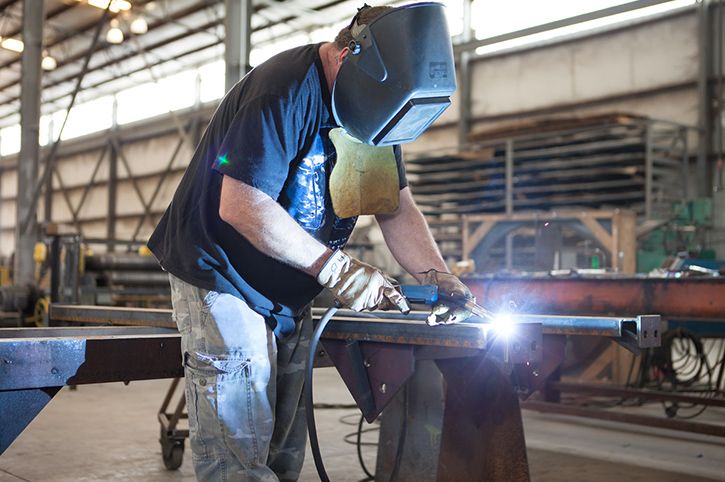Usual Welding Repair Work Issues and Exactly How to Address Them Effectively
Welding repair services usually run into a variety of issues that can endanger the honesty of the last product. Typical troubles include insufficient penetration, porosity, and misalignment, among others. Each problem presents unique obstacles that require details techniques for resolution. Comprehending these problems is vital for welders intending to boost their skills and end results. This discussion will certainly explore these typical welding repair service issues and efficient techniques to resolve them.
Insufficient Penetration
Insufficient infiltration occurs when the weld metal fails to fully fuse with the base material, leading to weak joints and possible architectural failures. This concern often originates from inadequate warmth input, inaccurate electrode angle, or inappropriate welding speed. Welders might come across insufficient infiltration because of a miscalculation of the required parameters for a specific product density or kind. Furthermore, contamination on the base material's surface area can impede efficient bonding, aggravating the issue. To resolve insufficient infiltration, welders need to ensure appropriate setups on their tools and maintain a clean job surface area. Normal assessment of welds is suggested to determine any deficiencies early, permitting prompt improvements and the avoidance of jeopardized architectural honesty in welded assemblies.
Porosity
Porosity is an usual problem in bonded joints that materializes as tiny gas bubbles trapped within the weld metal. This defect can endanger the integrity of the weld, resulting in reduced strength and prospective failing under stress. Montana Mobile Welding and Repair Welding. Porosity usually arises from contamination, moisture, or improper welding techniques, which permit gases to leave right into the molten weld swimming pool. To address porosity, welders need to assure proper surface preparation, maintain a clean workplace, and utilize ideal welding specifications. Furthermore, selecting the appropriate filler material and securing gas can alleviate gas entrapment. Regular inspection and testing of welds can assist recognize porosity early, ensuring timely corrective actions are taken, thus maintaining the high quality and reliability of the bonded framework
Imbalance
Imbalance in welding can develop from different variables, consisting of incorrect setup and thermal growth. Understanding the source is necessary for effective resolution. Several adjustment methods are available to realign components and guarantee architectural honesty.
Reasons of Misalignment
Welding imbalance typically stems from a range of underlying concerns that can compromise architectural integrity. One main cause is improper fit-up of components prior to welding, which can cause spaces and irregular surface areas. Variants in thermal development during the welding procedure can also lead to distortion, specifically if the products being joined have various coefficients of growth. Furthermore, insufficient fixturing and securing might fall short to hold elements safely in position, bring about movement throughout welding. Badly conserved devices, including welding devices and tools, may present incongruities in the weld grain, further adding to imbalance. Operator mistake, stemming from insufficient training or experience, can likewise play a significant role in creating misaligned welds.

Improvement Techniques Readily Available
Attending to imbalance effectively calls for a mix of restorative techniques tailored to the certain concerns at hand. One typical method is using fixtures or jigs to hold parts in the proper placement during welding, guaranteeing regular alignment. Furthermore, pre-heating the materials can assist reduce distortion and boost fit-up. For substantial misalignment, mechanical adjustment strategies, such as utilizing hydraulic jacks or clamps, can be used to fix the placement prior to welding. Post-weld heat treatment might also be required to alleviate anxieties brought on by imbalance. Lastly, careful examination and change during the configuration stage can prevent misalignment problems from becoming substantial troubles, promoting a smoother welding process and improving overall architectural honesty.
Distortion
Distortion is a typical difficulty in welding that can occur from different factors, consisting of irregular cooling and heating. Comprehending the sources of distortion is vital for applying efficient avoidance techniques. Resolving this problem not just improves structural integrity however also enhances the total high quality of the weld.
Causes of Distortion
When subjected to the intense warmth of welding, products typically undergo changes that can cause distortion. This sensation primarily occurs from thermal development and contraction throughout the welding process. As the weld area warms up, the product broadens; upon cooling, it acquires, which can create internal stresses. Additionally, irregular heating across a work surface can aggravate these stresses, causing warping or flexing. The kind of material additionally plays a substantial duty; steels with varying thermal conductivity and coefficients of development may respond differently, causing unpredictable distortions. In addition, inadequate joint layout and poor fixturing can add to misalignment during welding, enhancing the probability of distortion. Recognizing these causes is essential for efficient welding repair work and prevention approaches.
Avoidance Techniques
Efficient prevention strategies for distortion during welding concentrate on regulating warmth input and ensuring correct joint layout. Preserving a consistent warm input assists to reduce thermal growth and tightening, which can cause distortion. Using strategies such as pre-heating the work surface can also lower the temperature slope, promoting uniform home heating. In addition, choosing ideal joint designs, such as T-joints or lap joints, can enhance stability and minimize stress and anxiety focus. Implementing appropriate fixturing to safeguard the workpieces in area additionally help in keeping positioning during the welding procedure. Lastly, staggered welding series can disperse heat a lot more additional resources equally, preventing localized distortion. By using these methods, welders can considerably decrease the chance of distortion and boost the general quality of their welds.
Fracturing
Splitting is a typical problem come across in welding repairs, usually resulting from various variables such as improper air conditioning prices, material option, or insufficient joint prep work. The incident of cracks can greatly endanger the integrity of the weld, leading to potential failings during procedure. To address this issue, welders have to first examine the origin, ensuring that materials are compatible and appropriately selected for the certain application. In addition, managing the cooling price during the welding process is crucial; fast cooling can induce anxiety and lead to fracturing. Appropriate joint style and prep work likewise add to minimizing the threat. Carrying out these strategies can improve weld top quality and toughness, ultimately decreasing the probability of cracking in completed weldments.

Insufficient Fusion
A considerable problem in welding fixings is incomplete blend, which happens when the weld steel does not sufficiently bond with the base material or previous weld passes - Belgrade Welding. This flaw can result in weak points in the joint, potentially compromising the stability of the welded structure. Elements adding to incomplete fusion include insufficient heat input, inappropriate welding technique, and contamination of the surface areas being joined. To resolve this concern properly, welders must ensure appropriate pre-weld cleansing and surface preparation, in addition to readjust their welding criteria to achieve appropriate infiltration and combination. Normal assessment during browse around this site the welding procedure can also aid determine insufficient blend early, enabling for prompt rehabilitative measures to enhance the overall top quality of the weld
Overheating
While welding repair services can boost architectural stability, overheating provides a substantial obstacle that can bring about product deterioration. Too much warmth during welding can modify the mechanical properties of metals, leading to lowered stamina, raised brittleness, and bending. This sensation is especially vital in high-stress applications where architectural dependability is extremely important. Identifying overheating can involve visual evaluations for discoloration or distortion, along with monitoring temperature level throughout the welding process. To mitigate the dangers connected with overheating, welders must employ appropriate techniques, such as regulating warmth input, changing travel rate, and making use of ideal filler materials. Furthermore, implementing pre- and post-weld warm treatments can help bring back product residential or commercial properties and boost the overall top quality of the fixing, making certain lasting performance and security.
Often Asked Concerns
What Are the Typical Signs of a Welding Issue?

How Can I Check My Welds for Top quality?
To check welds for top quality, one can make use of visual assessments, ultrasonic testing, and radiographic techniques. Each method guarantees structural stability, determines flaws, and verifies adherence to defined requirements, eventually boosting the reliability of the bonded joints.
What Security Precautions Should I Take While Welding?
When welding, one need to focus on safety and security by using proper personal safety devices, ensuring proper ventilation, protecting flammable products away, keeping a tidy office, and being mindful of surroundings to avoid injuries and crashes.
Can I Fix a Weld Without Renovating the Entire Joint?
Repairing a weld without redesigning the whole joint is feasible, relying on the damages (Belgrade). Techniques such as grinding, adding filler product, or using a welding process can effectively address certain problems while preserving the bordering structure
What Equipment Are Vital for Effective Welding Repair Works?
Crucial tools for effective welding fixings consist of a welding device, cable brush, grinder, safety equipment, clamps, and filler products. Each check it out tool plays an essential duty in ensuring high quality and security during the fixing process. Porosity generally emerges from contamination, dampness, or incorrect welding methods, which permit gases to escape into the liquified weld swimming pool. Poorly kept tools, including welding machines and devices, may present variances in the weld grain, additional contributing to imbalance. When subjected to the intense warm of welding, products commonly undertake modifications that can lead to distortion. Cracking is a common issue run into in welding repair work, usually resulting from different variables such as improper cooling rates, material selection, or inadequate joint preparation. A considerable issue in welding repairs is insufficient combination, which happens when the weld steel does not appropriately bond with the base material or previous weld passes.